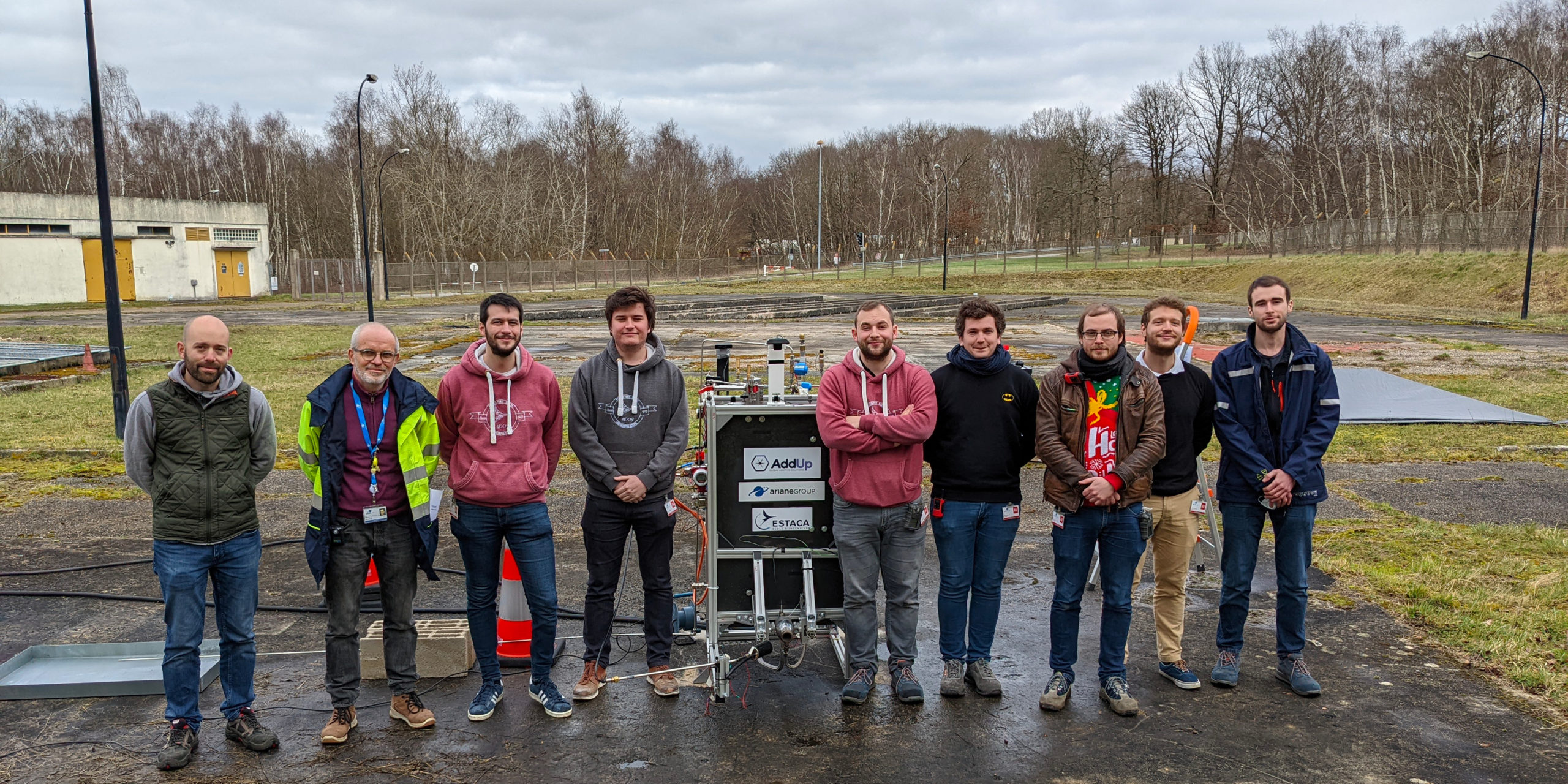Mission accomplished for Aurora, a 3D-printed space engine built by students
05.05.2022

ArianeGroup is supporting a team of aerospace students at the ESTACA French engineering school with an innovative project: an actual space engine running on liquid propellant, built using 3D printing. The tests were a success!

The team of ESTACA students with their supervisors
At ArianeGroup in Vernon, near Paris, an exceptional initiative being conducted by a group of young space enthusiasts has just recorded a remarkable success.
The story starts in 2018, when a team of aerospace students at the ESTACA French engineering school created the Aurora Liquid Engine project to develop, build and test a low-thrust, liquid propellant rocket engine.
The ambitious goal of the Aurora project was to carry out all the stages in the development of a liquid propellant engine (liquid oxygen/Jet-A1), from preliminary design, to manufacturing of the engine parts and a customised test bench and actual test firings.
As a fully committed partner, ArianeGroup is assisting the project by offering technical support for the engine tests at the ArianeGroup facility in Vernon.

Test set-up – LOX filling bench 1 – before firing n° 1
To prove that a high-performance engine can be produced inexpensively and rapidly, the students opted for an innovative process: metal 3D printing. Aurora is built from a single piece of 3D-printed metal alloy supplied by the specialist company AddUp Solutions, another partner in the project. Unlike conventional machining processes, in which space engines consist of thousands of parts assembled in a complex arrangement, the benefits of the approach adopted for Aurora are numerous: minimized weight, optimized geometrical shapes, reduced production time, increased strength by eliminating fastenings and welds…

Engine in place before firing n° 1
In both its design and its construction, Aurora could be the answer to the challenges of space propulsion today and tomorrow – but does it work?
To test it, the Aurora team developed a compact structure capable of accommodating the engine, sensors, tanks and igniter on the test bench of the ArianeGroup’s Vernon site, and connected it to a monitoring and control bench.

Concentration in the lead-up to the first firing
Owing to the health crisis, the project had to be postponed for a while, but in February of this year, the students were finally able to spend a week testing their engine on the ArianeGroup test site, with two 5-second firings. These tests validated the design of the test bench and of the engine.
The data have been analysed and the engine is scheduled to be cut up in order to maximize the feedback to ESTACA.
You can go to the Aurora Liquid Engine project team website and their Facebook page
ArianeGroup is very proud to have taken part in this project. Well done to the Aurora Liquid Engine team!